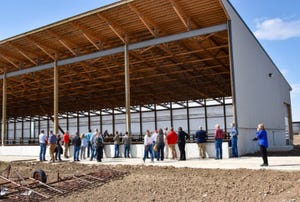Senators celebrate one-year farm bill anniversary
Senators and USDA look at boosts made in 2018 farm bill signed into law on Dec. 20, 2018.

On Dec. 11, 2018, the Senate passed the farm bill, the Agriculture Improvement Act of 2018, on an 87-13 vote -- the most votes ever received by a single farm bill. A day later, the House approved the bill on a 369-47 vote.
In honor of the one-year anniversary, Senate Agriculture Committee chairman Pat Roberts (R., Kan.) and ranking member Debbie Stabenow (D., Mich.) marked the one-year anniversary of the signing of the 2018 farm bill on Dec. 20.
“With low prices and trade uncertainty, farmers and ranchers needed this farm bill, and I’m pleased we could provide a level of certainty and predictability,” Roberts said. “Once again, members of the agriculture committees put aside their difference and worked together to deliver for rural America. From protecting and strengthening crop insurance and agriculture research to providing farmers in distress with mental health resources and their herds with more protection from deadly disease outbreaks, this bill touches the lives of every American.”
In an op-ed, Roberts noted that during farm bill listening sessions across the country, he consistently heard from farm country: “Do no harm to crop insurance.” Roberts noted, “I’m proud to say we not only protected the farmer’s most important safety net, but we also strengthened the crop insurance program by encouraging private-sector innovation of policies.”
“The historic investments we made in the 2018 bipartisan farm bill are already making a real difference in Michigan,” Stabenow said. “From expanding markets for our farmers to investing in our small towns and rural communities to protecting the Great Lakes, Michigan really is on every page.”
The farm bill received widespread support from more than 900 agricultural groups throughout the country.
The U.S. Department of Agriculture's Farm Service Agency, Natural Resources Conservation Service (NRCS), Risk Management Agency and Farm Production & Conservation Business Center worked to deliver programs to assist farmers and ranchers. Additionally, these agencies made strides to enhance efficiency and effectiveness to improve service to their customers, including:
Launching the new Dairy Margin Coverage Program, holding signups for both 2019 and 2020. More than 23,000 producers enrolled for coverage for 2019; the 2020 signup closes tomorrow.
Publishing interim final rules on the Conservation Reserve Program, Conservation Stewardship Program and Environmental Quality Incentives Program as well as making minor changes to a number of conservation regulations, including the Technical Service Provider provisions, enabling 2020 signups for these key conservation programs. Additionally, NRCS has made great strides to meet the farm bill requirement to review and update its 171 conservation practice standards. So far, 58 have been improved, and two new ones have been developed.
Opening 2019 and 2020 enrollment for the Agriculture Risk Coverage and Price Loss Coverage programs.
Outlining program opportunities for producers growing hemp, as directed by the farm bill, including Whole-Farm Revenue Protection, which becomes available in crop year 2020.
In the op-ed, Roberts added, “We’ve held a handful of hearings to learn about the bill’s implementation. Good progress has been made thus far, and I want rural America to know that we are still working for you. We have much to accomplish for our farmers, ranchers and growers in 2020, and I’ll continue to need your input.”
About the Author(s)
You May Also Like





